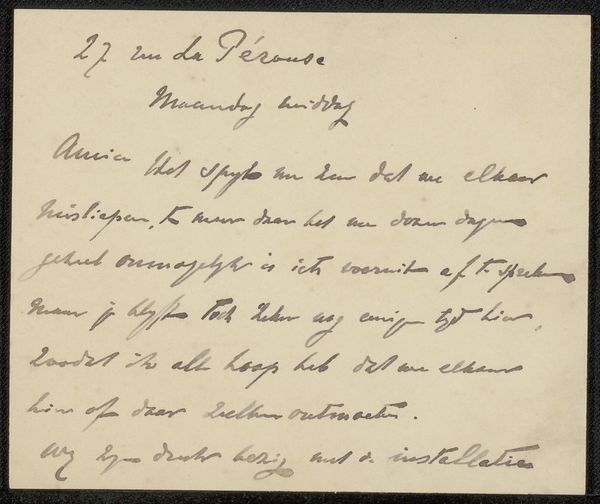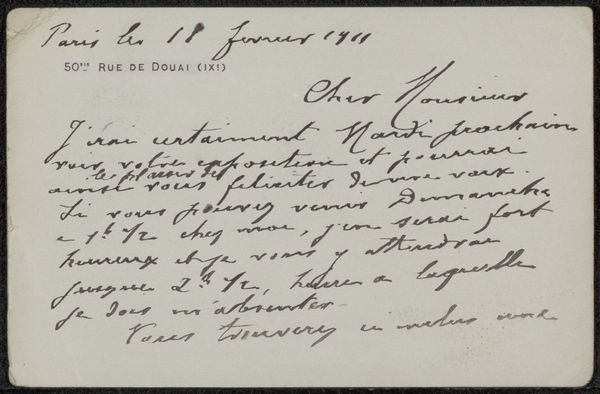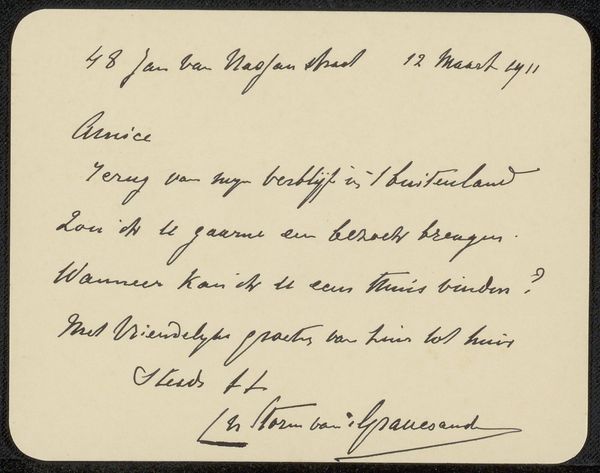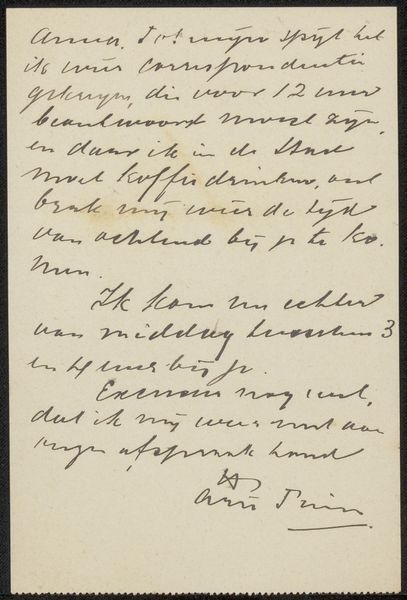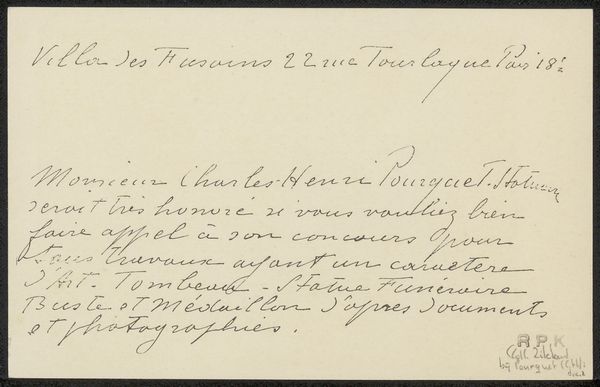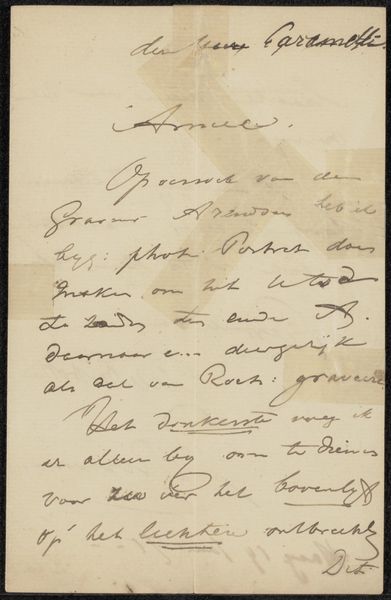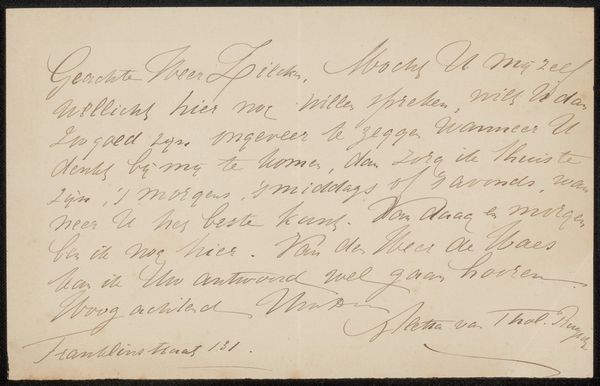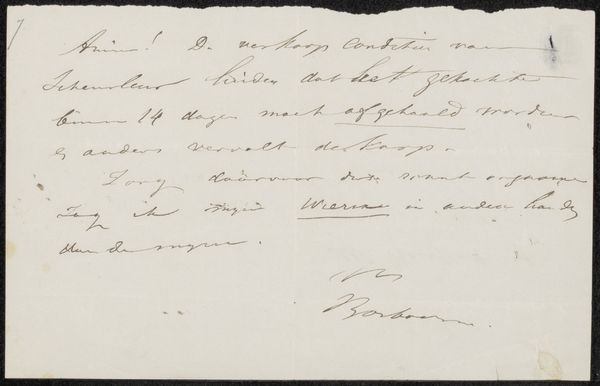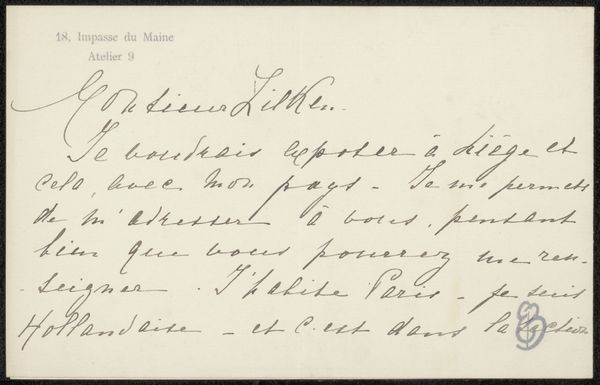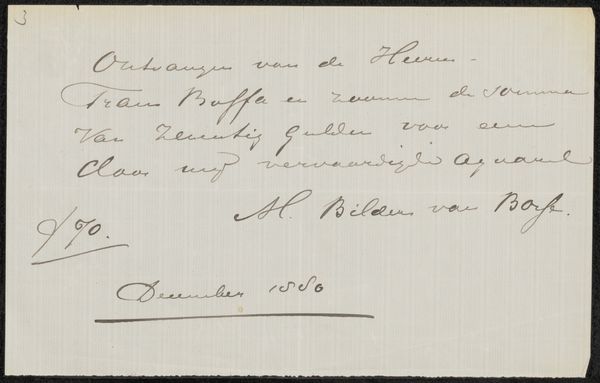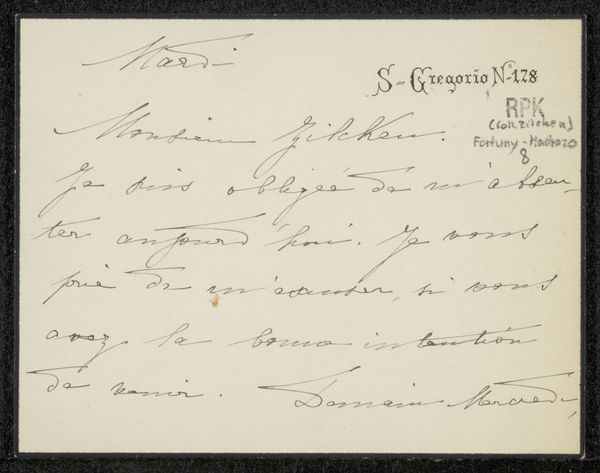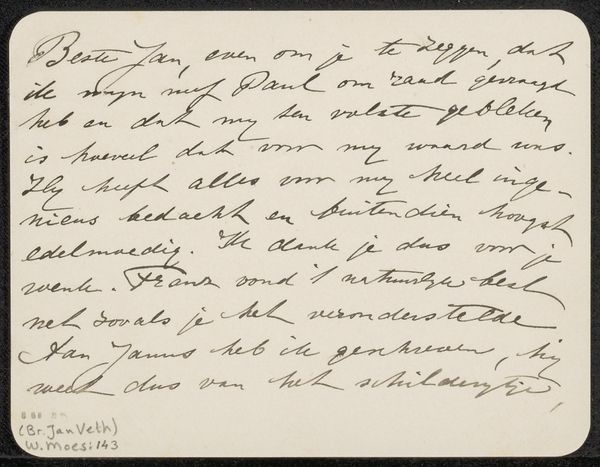
drawing, paper, ink
#
portrait
#
drawing
#
paper
#
ink
#
calligraphy
Copyright: Rijks Museum: Open Domain
Curator: Here we have a fascinating artifact – a calling card from Victor Barrucand to Philip Zilcken, dating from before 1928. It’s an ink drawing on paper, dominated by exquisite calligraphy. Editor: My initial reaction is one of formality, and a touch of melancholy, actually. The sepia tones and the elegant script convey a sense of bygone social customs. Almost like a tiny stage set for a forgotten drama. Curator: It’s interesting you say "drama". Victor Barrucand was the Director of "l’Akhbar" and the message seems to subtly reference struggles realizing an idea in Paris. The text hints at the complex negotiation of artistic endeavors within larger societal and political contexts, wouldn't you say? Editor: Absolutely! And it reflects, perhaps unintentionally, on how social position influences the messages we convey, and to whom. A calling card speaks volumes beyond its literal message. It reflects societal status, power dynamics. Curator: Indeed. The calligraphy itself, the loops and flourishes of the pen, carries its own symbolism. Notice how the size and emphasis shift, underlining the most crucial information and subtly pointing at Victor's professional stature. Calligraphy itself can act as an iconographic system. Editor: So the loops around Barrucand's name almost operate as an implied frame, marking and preserving his identity across time... Interesting thought. Beyond that, how this card travels across history reflects changing dynamics between North African and European elites during the height of European colonialism. The message subtly suggests tension. Curator: A potent image of history caught in a fragile, intimate form. It serves as an emotional bridge between historical moments and contemporary understandings, I feel. Editor: It leaves me wondering what this unrealized idea in Paris was, and how Zilcken reacted, but perhaps its power resides in its openness to interpretation. It certainly demonstrates the value in uncovering meaning within the material of day-to-day life.
Comments
No comments
Be the first to comment and join the conversation on the ultimate creative platform.
